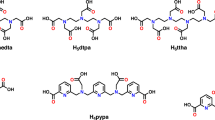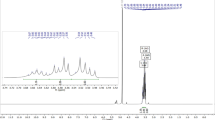Abstract
THE use of ‘activated' glycerol dichlorhydrin as a reagent for the colorimetric or absorptiometric estimation of vitamin A has been proposed by Sobel and Werbin1. As reported, the reaction appears attractive in view of the stability of the chromophor, which makes for ease of measurement. A disadvantage is the low activity of the reagent compared with chloroformie antimony trichloride (Carr–Price reaction) ; the E (1 per cent, 1 cm.) 550 mµ value per unit of vitamin A is only about 25 per cent of the corresponding E(1 per cent, 1 cm.) 620 mµ (Carr–Price) value. The pure compound does not react at all; ‘activation' is effected by distillation with 1–2 per cent antimony trichloride1; but no account of what causes ‘activation' has yet appeared.
This is a preview of subscription content, access via your institution
Access options
Subscribe to this journal
Receive 51 print issues and online access
$199.00 per year
only $3.90 per issue
Buy this article
- Purchase on SpringerLink
- Instant access to full article PDF
Prices may be subject to local taxes which are calculated during checkout
Similar content being viewed by others
References
Sobel, A. E., and Werbin, H., J. Biol. Chem., 159, 681 (1945): Ind. Eng. Chem. (Anal. Ed.), 18, 570 (1946); Anal. Chem., 19, 107 (1947).
Author information
Authors and Affiliations
Rights and permissions
About this article
Cite this article
PENKETH, D. Glycerol Dichlorhydrin and Vitamin A. Nature 161, 893 (1948). https://doi.org/10.1038/161893a0
Issue date:
DOI: https://doi.org/10.1038/161893a0



